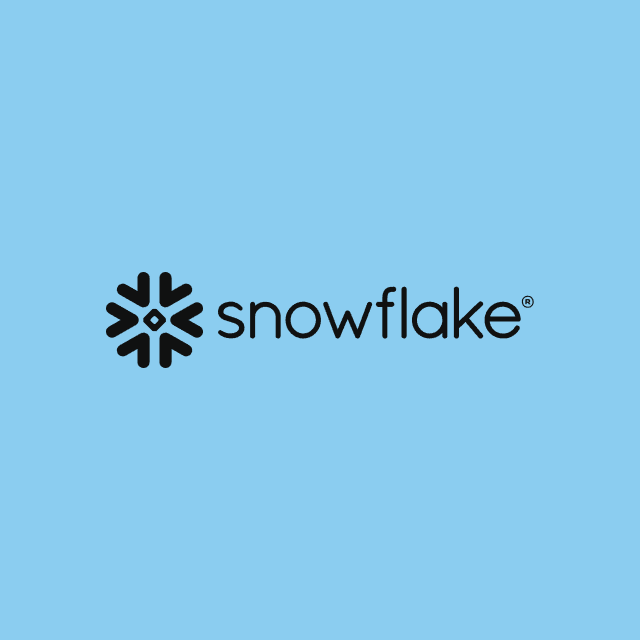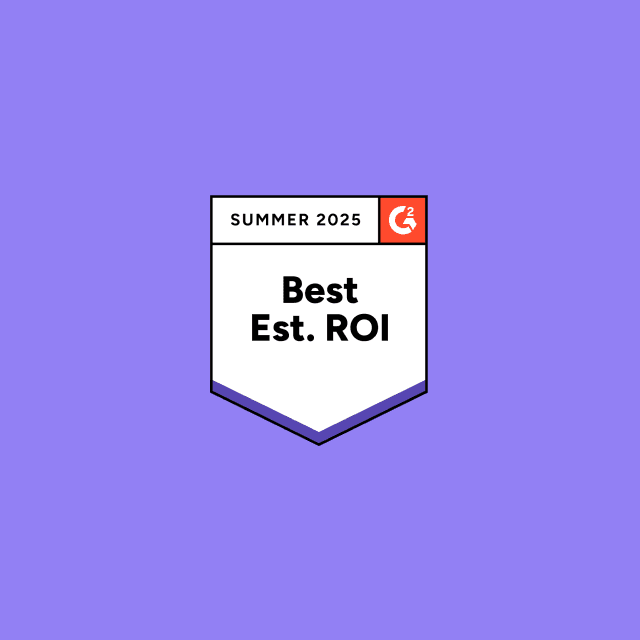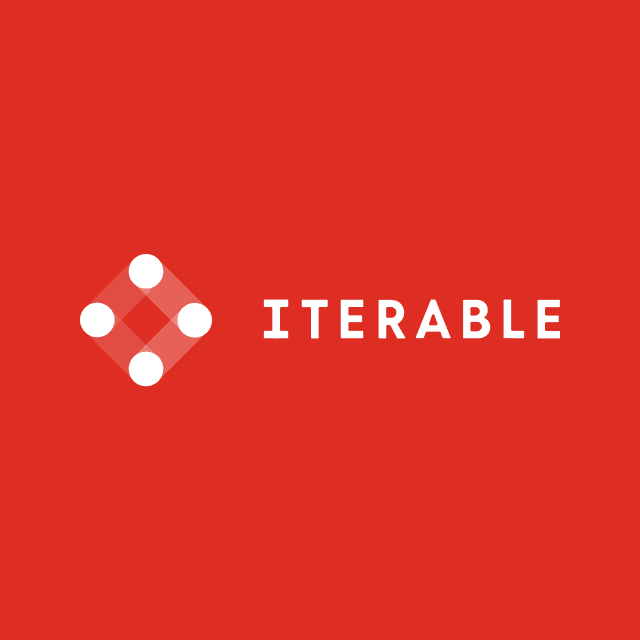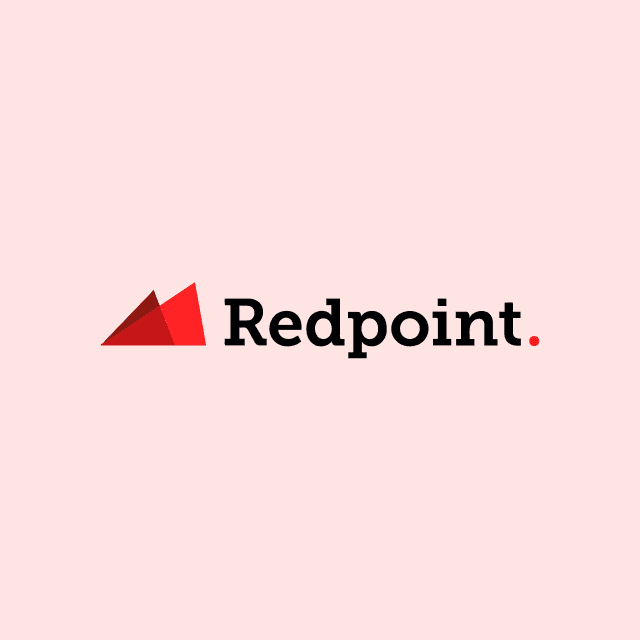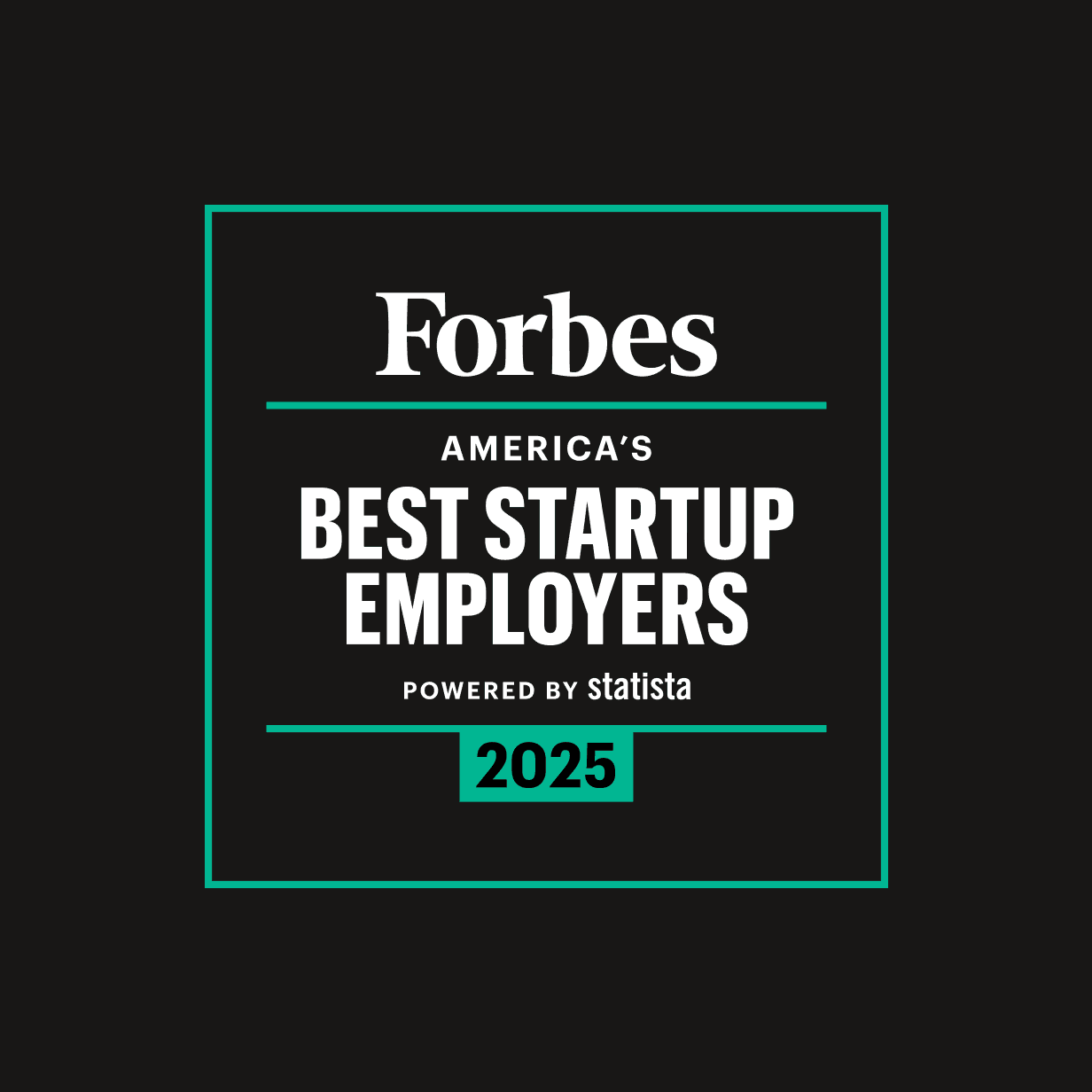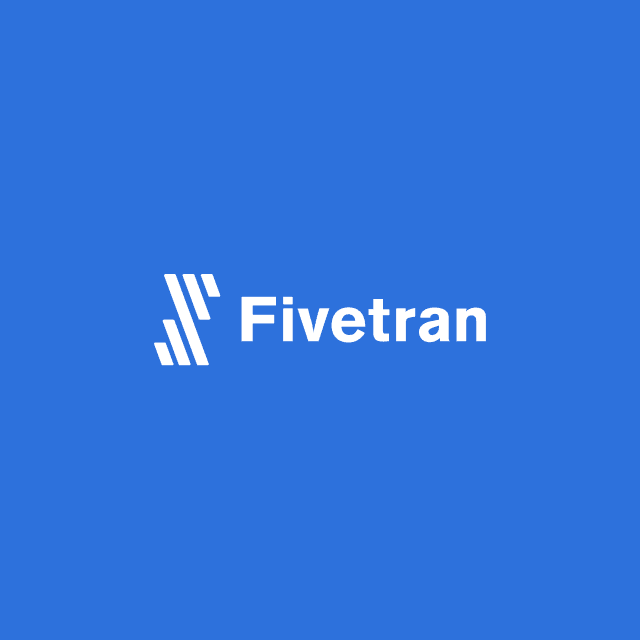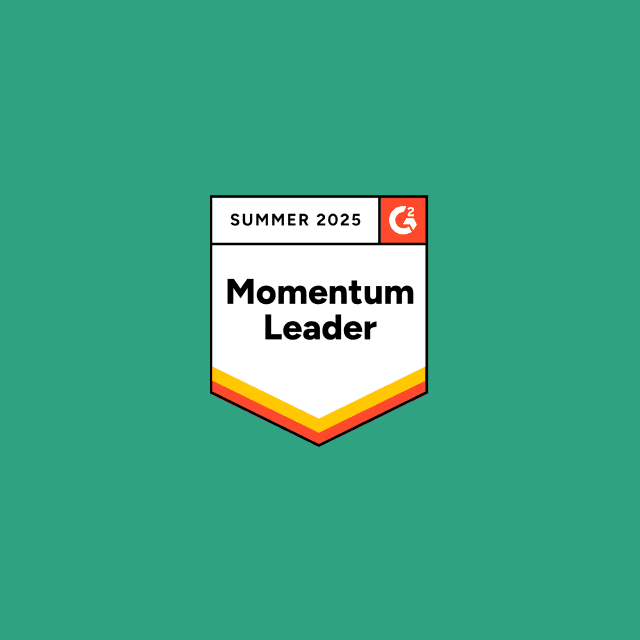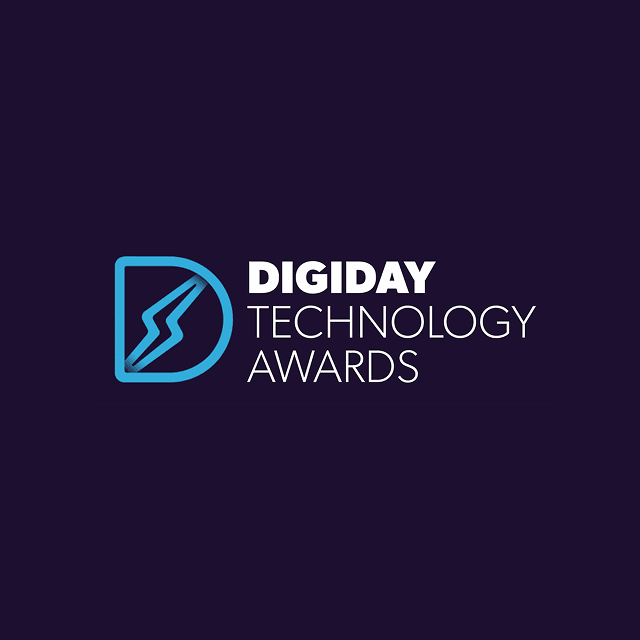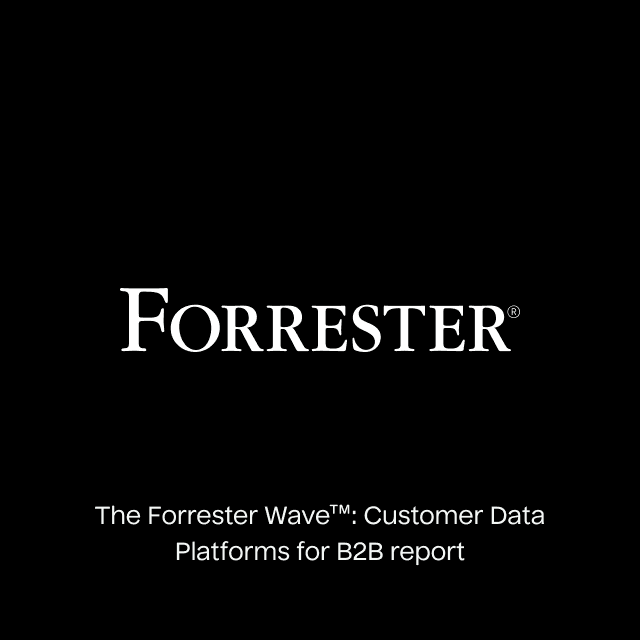Take a moment to consider your latest shopping experiences. Whether you shopped online or in-store, your most recent purchase likely involved enrolling in a loyalty program to help you rack up rewards and enjoy exclusive perks. In fact, loyalty programs are more common than ever; the average American is enrolled in around 17 loyalty programs.
Today, every major retailer is either rolling out, revamping, or thinking about launching a loyalty program. In fact, 1 in 3 businesses without a loyalty program plan to create one by 2027. The reason is simple: loyalty programs allow brands to provide value to customers while collecting valuable first-party data, enabling them to understand customer behavior and preferences in the new privacy-centric “cookieless” era. This first-party data fuels retail media networks and personalized marketing, driving customers to that crucial second purchase, transforming casual buyers into loyal advocates, and significantly boosting customer lifetime value.
So, why are loyalty programs such a big deal? Why are companies investing so heavily in them? What makes them so effective? Let's dive into what makes these programs tick, the different types available, and why they’re becoming indispensable for today’s retailers.
What is a Loyalty Program?
A loyalty program is a strategic marketing initiative designed to encourage repeat purchases and foster deeper, lasting relationships with your customers. By offering personalized incentives, you can build strong connections that entice your customers to consistently choose your products or services over one of your competitors.
Types of Loyalty Programs
Loyalty programs come in various forms, each tailored to meet specific business goals and customer preferences. Here are the most common types:
| Program Type | Description | Example |
|---|---|---|
| Points-based programs | Customers earn points for every purchase, which can be redeemed for exclusive rewards. This foundational approach is widely used. | PetSmart Treats |
| Tier-based programs | Customers unlock better rewards and perks as they spend more, encouraging repeat purchases and higher LTV. | American Airlines AAdvantage |
| Subscription-based programs | For a recurring fee, customers gain access to exclusive benefits like special pricing, products, and shopping experiences. | Amazon Prime |
| Community-based programs | Customers gain access to exclusive events and limited-edition items, creating a sense of belonging and engagement. | Sephora Beauty Insider |
| Cash-back programs | Customers receive a small percentage of their spending back as cash rewards, typically through credit card partnerships. | Rakuten |
| Partnership-based programs | Customers can redeem rewards across multiple brands and vendors through a single loyalty program to maximize their spending and rewards. | Capital One |
Successful loyalty programs often blend several of these strategies to maximize customer engagement. Regardless of the structure, the essence of a great loyalty program lies in aligning the rewards and benefits with what customers value most, creating a win-win scenario that boosts customer retention and brand loyalty.
Why are Brands Investing in Loyalty?
The stakes are higher than ever in retail. Brand marketers face intense competition, and maintaining customer loyalty is crucial for sustained growth. Loyalty programs have emerged as a powerful tool to achieve these goals. Here’s why companies are increasingly investing in them:
- First-Party Data: Loyalty programs give you access to rich first-party data, offering insights into customer behavior, preferences, and spending patterns. This data is essential for personalizing marketing efforts, improving customer experiences, and creating additional revenue streams like Retail Media Networks, especially as third-party cookies are phased out.
- Cost Efficiency and Owned Channels: Acquiring new customers is often more expensive than retaining existing ones. Loyalty programs help keep your customers engaged, reducing the need for extensive paid acquisition efforts. By helping you build direct communication channels (ex., email) with customers, they reduce reliance on intermediaries like social media platforms and allow for more cost-effective, targeted marketing.
- Competitive Advantage: In a crowded marketplace where perks like free shipping are now the norm, a well-executed loyalty program creates a compelling reason for your customers to purchase through your brand, thus further solidifying long-term customer loyalty.
- Enhanced Retention and Engagement: Loyalty programs encourage repeat purchases and keep customers engaged with personalized rewards and exclusive perks. By rewarding your customers for their continued business, you can significantly reduce churn, increase customer lifetime value, and turn customers into brand advocates.
Proof Points
The data is clear: loyalty programs are not just a trend but a strategic imperative. They significantly drive customer engagement, retention, and revenue, making them an essential part of any modern retailer's toolkit.
Consumer Stats
- Spending Behavior: 66% of consumers adjust their spending to maximize loyalty benefits.
- Increased Purchases: 75% of consumers are more likely to make a purchase after receiving an incentive.
- Primary Motivation: 50% of consumers join loyalty programs to earn rewards on everyday purchases.
Brand Stats
- Revenue Lift: Top-performing loyalty programs can boost revenue from existing customers by 15-25% annually.
- Positive ROI: 80% of companies report a positive ROI from loyalty programs, averaging around 4.9x.
- Marketing Investment: Brands plan to allocate 27% of their marketing budget to loyalty and CRM marketing.
How Do Loyalty Programs Work?
While many consumers may not love to hear it, loyalty programs are fundamentally based on a value exchange. Consumers receive exclusive perks, discounts, and rewards, but in return, they "trade" their first-party data. Brands use this data to create rich customer profiles, providing them with insights and enabling more personalized experiences that ultimately drive revenue.
A great example of this is Walgreens. When you walk up to make a purchase, the cashier asks, “Do you have a Walgreens card you’d like to use?” If you don’t have a Walgreens credit card, you miss out on member-exclusive prices and cashback potential. As a consumer, you get access to special perks. In return, Walgreens is able to link all of your purchases back to your customer profile so they can understand your buying habits, purchase frequency, and product interests to then use in marketing and advertising.
A typical loyalty program should act as a flywheel: a customer makes a purchase, gets recognized as a loyalty member, and is then incentivized to make another purchase. Brands leverage loyalty programs to collect more first-party data and then use that first-party data to personalize marketing that drives customers to take action.
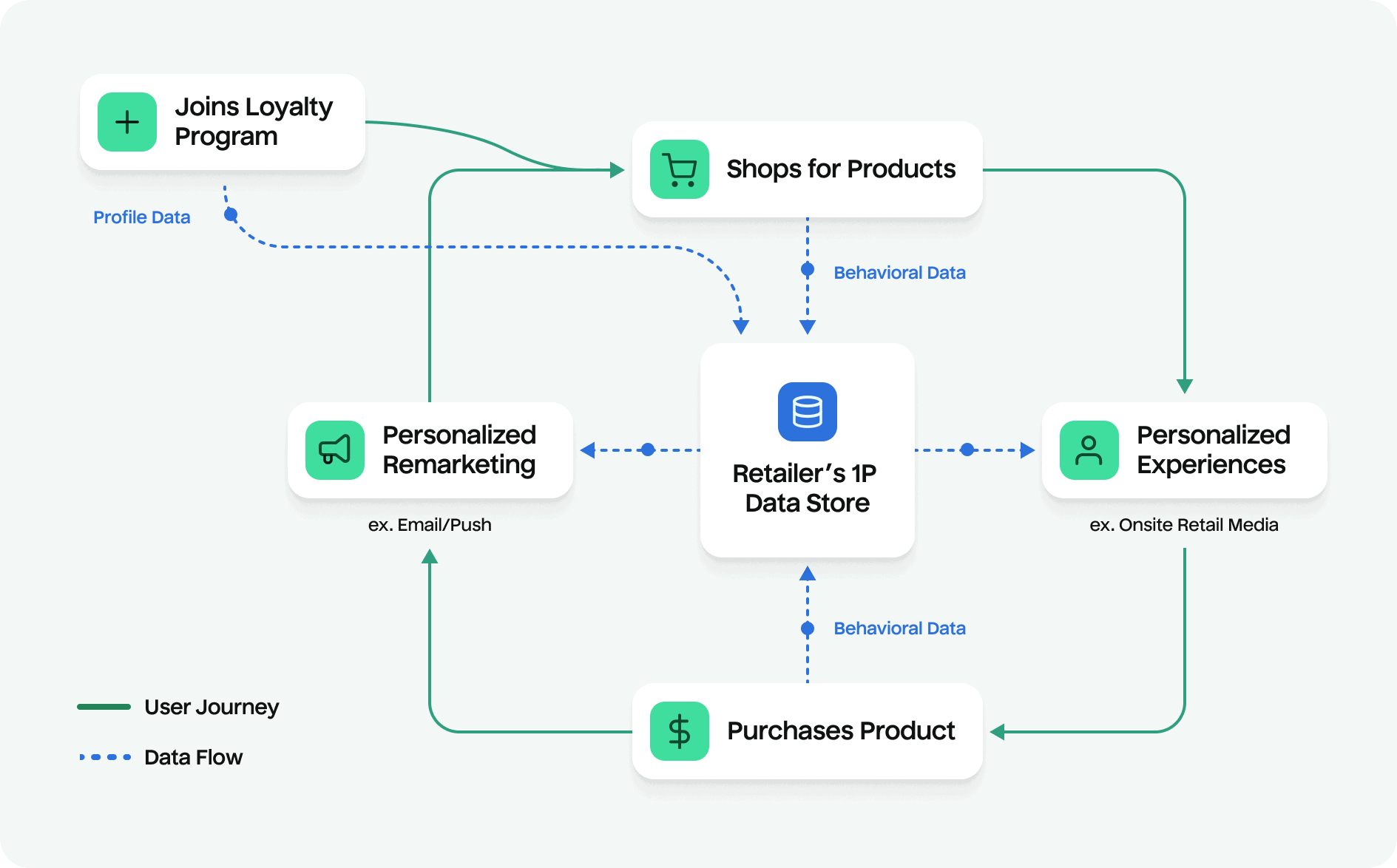
What Makes a Loyalty Program Successful?
The success of a loyalty program hinges on your company’s ability to provide real value to customers, enticing them to share their first-party data willingly. Many loyalty programs falter because they fail to offer meaningful rewards and expect customers to sign up for little in return.
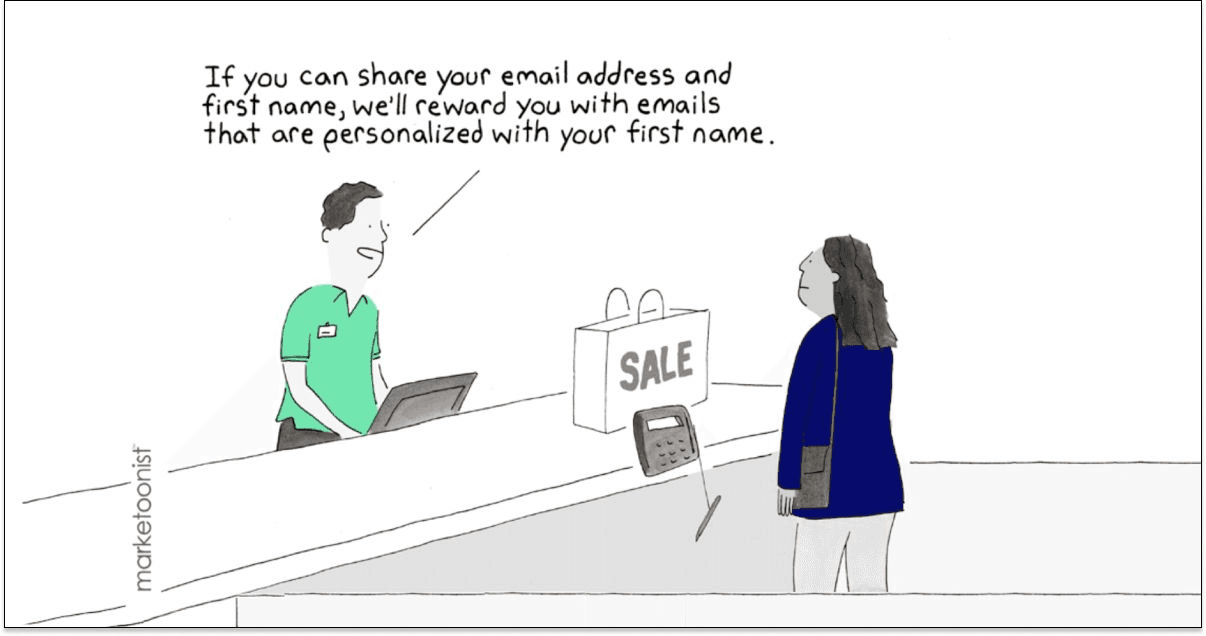
Loyalty programs need to be treated as a trade-off, meaning they need to provide something of value to the customer in exchange for their data.
Here are the key elements that make a loyalty program successful:
- Centered on Customer Value: The foundation of a successful loyalty program lies in understanding and delivering what customers value most. Different industries can leverage unique offerings at a lower cost to the brand while providing significant perceived value to customers. This could include exclusive discounts, early access to products, special events, or points redeemable for desirable rewards._ For example, airlines can offer free upgrades to fill empty seats, a high-value perk for customers that costs the airline very little._
- Seamless Integration in Purchase Journey: A loyalty program must be easy to use and seamlessly integrated into the customer’s shopping experience. Whether through a mobile app or a simple sign-up process at checkout, the program should be intuitive and user-friendly.
- First-Party Data-Driven Personalization: Utilizing first-party data to personalize the customer experience is a game-changer for loyalty programs. Brands that can offer personalized recommendations, tailored promotions, and relevant content will see higher engagement and loyalty across channels, driving more users to the second purchase and beyond.
- Continuous Improvement and Adaptation: Successful loyalty programs are not static. They continuously evolve based on customer feedback, changing preferences, and market trends. Regularly updating and enhancing the program ensures it remains relevant and effective.
The secret sauce of a successful loyalty program lies in delivering significant value to customers in exchange for their first-party data and ongoing engagement. By leveraging first-party data, offering relevant and engaging rewards, and maintaining a seamless user experience, brands can create deep connections with customers, driving long-term loyalty and growth.
How Data Powers Loyalty Programs
Every successful loyalty program shares one critical element: data. Loyalty programs thrive on first-party data, and the ability to access and utilize this data effectively is key.
However, getting data right in retail is no easy task. Retailers have to manage a variety of data sources spanning both online and offline channels. Modern consumers have extremely complex purchase journeys across devices and touchpoints, making it even more challenging to track and analyze their behavior. Additionally, the deprecation of third-party cookies and the rise of privacy regulations add further complications to this already intricate process.
“Customers love rational value like offers, points and cashback but brands need to also create a relationship with the customer through highly relevant and personalised messaging. This requires an even greater level of insight, powered by a companies ability to collect, manage and access customer data.”

Tom Piece
Managing Director at The Loyalty People
A Modern Loyalty Data Solution
To address these challenges and leverage data effectively, retailers are embracing a new architecture called the Composable CDP. A Composable CDP enables data teams with the flexibility to integrate and manage diverse data sources in their data warehouse, ensuring rich and accurate customer profiles. At the same time, marketers gain the tools they need to build audiences and orchestrate journeys across multiple channels. By offering self-serve access to valuable product, behavioral event, and user data within their data warehouse, the Composable CDP empowers both data teams and marketers to create highly personalized and effective marketing campaigns.
While not all loyalty programs are created equal, there are three core components to every program that the Composable CDP helps retailers solve:
- Data Centralization: Aggregating and consolidating customer data into unified customer profiles. These profiles must include rich data from various sources, including points/rewards status, customer attributes, digital shopping behavior, offline events, and data science models.
- Segment & Audience Creation: Building and activating hyper-segmented audiences with tools like Hightouch unlocks precise targeting and the creation of personalized offers.
- Campaign Delivery: Syncing these audiences with frontline marketing and advertising platforms, such as Salesforce Marketing Cloud, to initiate personalized customer journeys and deliver engaging cross-channel communications.
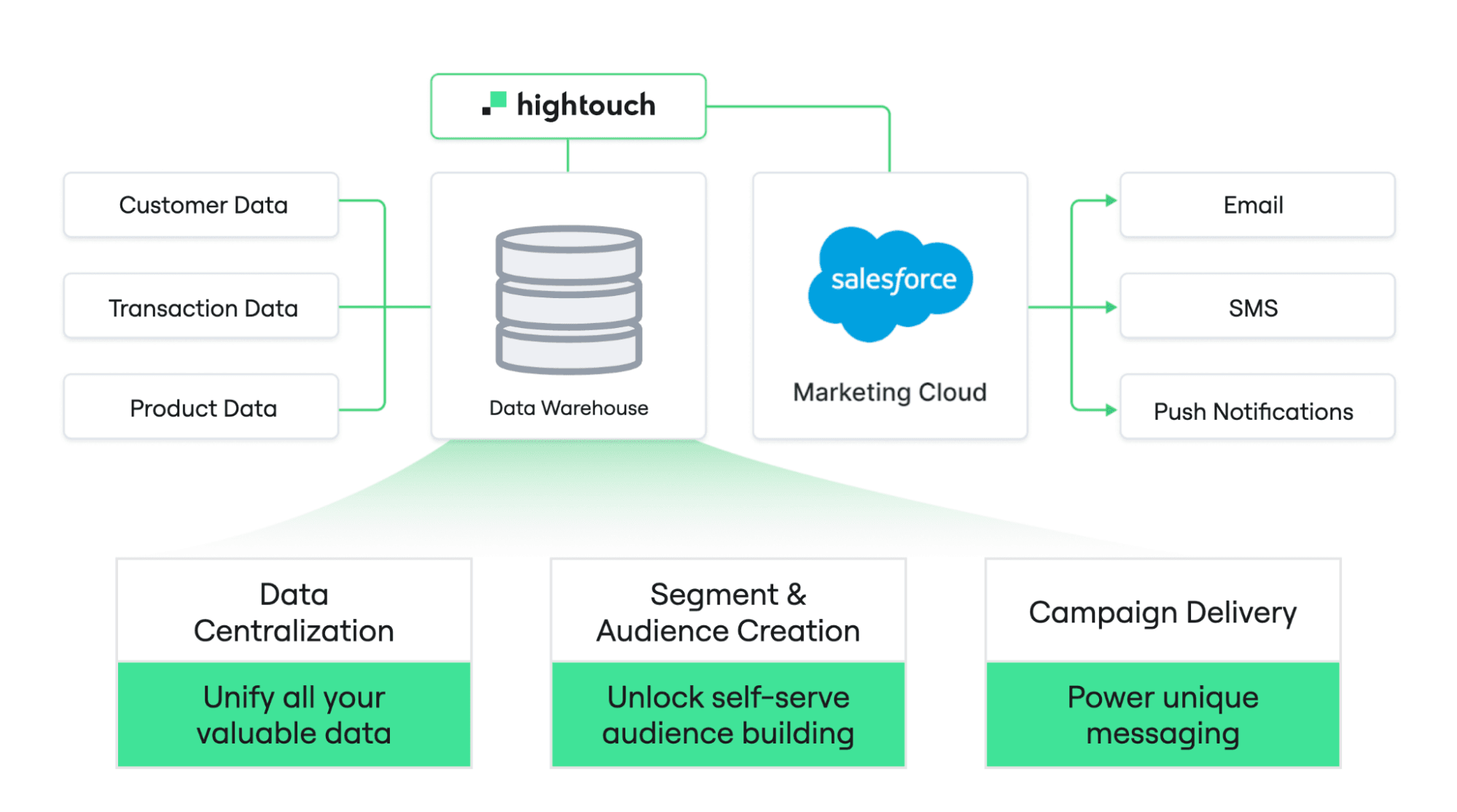
Proof Point
PetSmart exemplifies this architecture with their world-class “Treats Rewards” program. Launched in 2018, they now boast 65 million loyalty members, with 90% of all purchases linked to these members. Powered by Hightouch, this architecture has enabled the PetSmart team to achieve:
- Scalable Personalization: Delivering targeted offers and communications.
- Operational Efficiency: Simplified audience creation and management.
- Enhanced Engagement: Higher customer loyalty and repeat purchases.
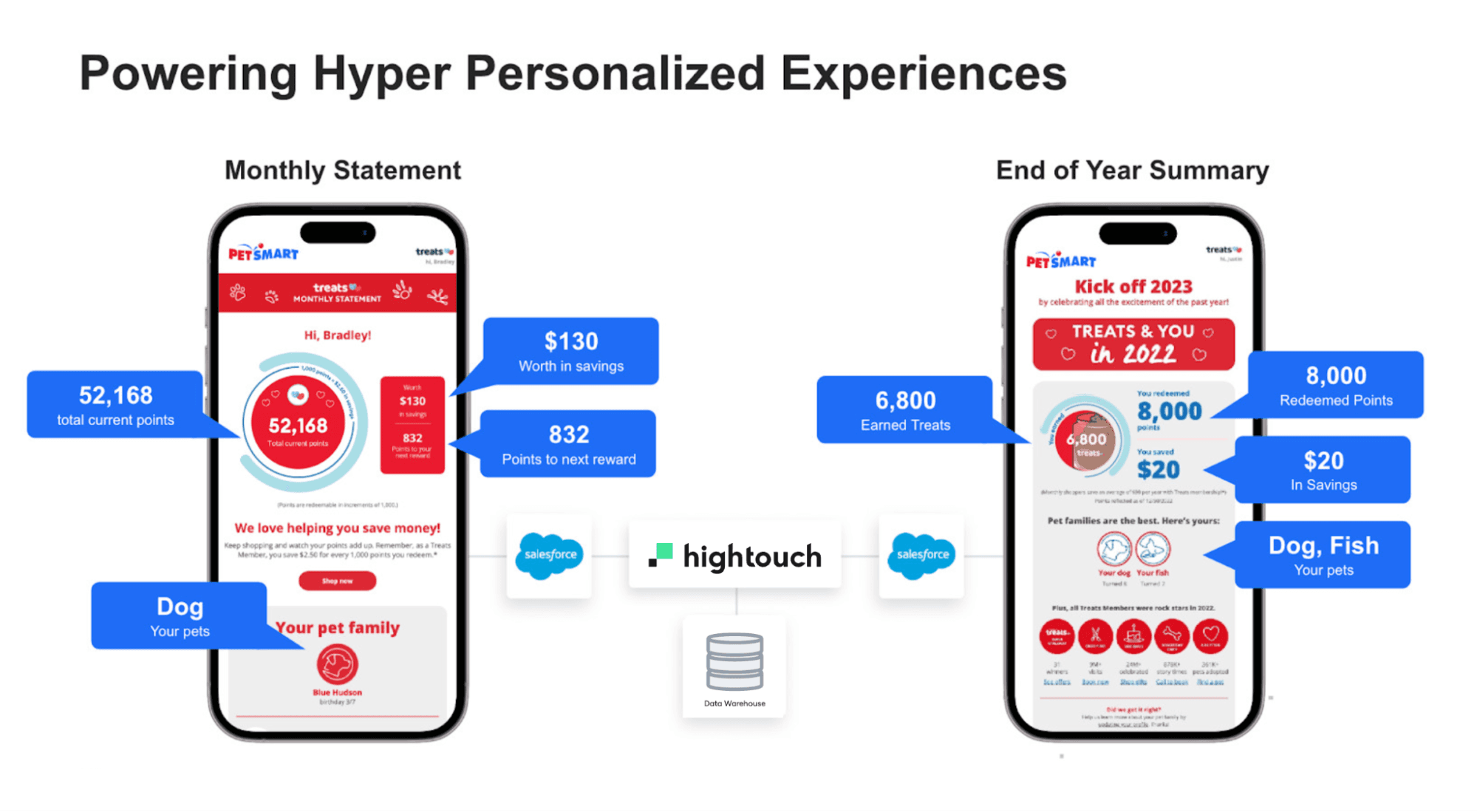
“We’re syncing millions of records directly to SFMC every single day to orchestrate personalized journeys for the 65+ million members in our loyalty program. We’re powering thousands of audiences and over four billion emails every year, and that’s not even factoring in what we do across other channels.”
Tino Tomasone
Sr. Manager, Database & Audience Management at PetSmart
Examples of Successful Loyalty Programs
There are thousands, if not tens of thousands, of loyalty programs out there, but not all of them are successful. In fact, many fail. The top loyalty programs all have one thing in common: they use data to deliver value to their customers. With that in mind, here’s a breakdown of some of the most successful loyalty programs running currently:
Starbucks
Starbucks was one of the pioneers in digital loyalty programs, launching an app-based rewards system soon after the introduction of the iPhone. The rewards program uses a point-based system to gamify the experience, leveraging hyper-personalized digital experiences that encourage customers to participate in challenges and events.
As of 2023, Starbucks boasts over 75 million members, of which 71% visit a store weekly. Remarkably, 41% of all U.S. sales come through the loyalty program.

American Airlines
Launched in 1981, the American Airlines AAdvantage program is one of the oldest and most well-known loyalty programs. The program rewards frequent flyers with miles that can be redeemed for future flights. Over the years, this initiative has expanded to include perks like priority boarding, access to exclusive lounges, additional baggage allowances, and other travel perks through their airline alliances. Loyalty members are continuously able to check in with their miles and status via digital touchpoints like a mobile app and targeted email offers.
Today, AAdvantage has grown to over 115 million members and is considered the largest airline loyalty program. According to Forbes, the program netted the company $3.1 billion in 2019 after operating expenses - at an outstanding 53% cash profit margin.
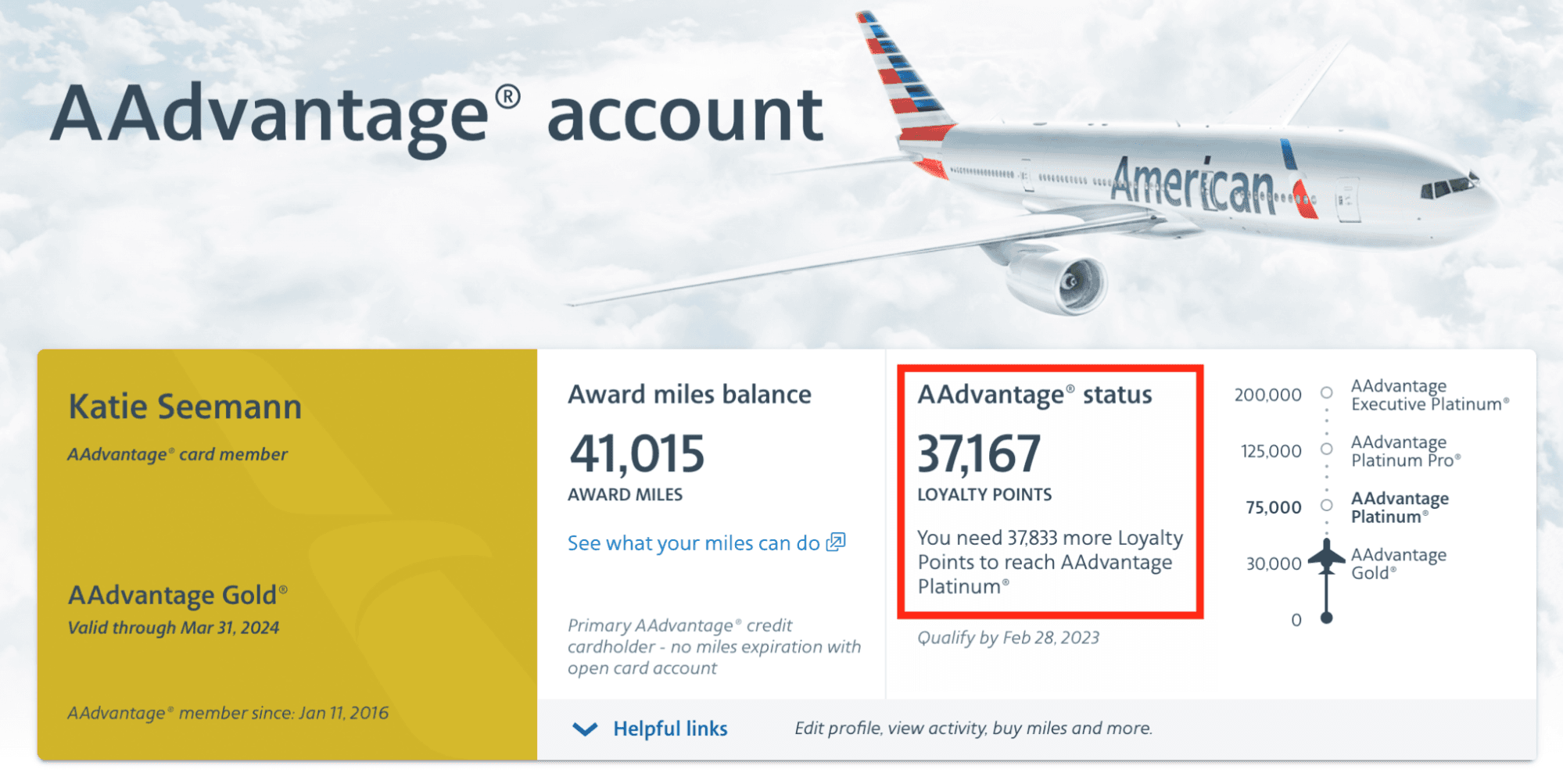
Sephora
Sephora's Beauty Insider program takes a highly effective community-based approach to drive customer engagement. Sephora uses the signals from the community to tailor all of the personalization in the program to ensure that the value provided is directly aligned with what members want. This includes exclusive offers and point multipliers to free gifts, exclusive events, and early access to specific products.
With an estimated 34 million members, it is one of the largest loyalty programs in the beauty industry. In 2018, U.S. members accounted for 80% of sales.
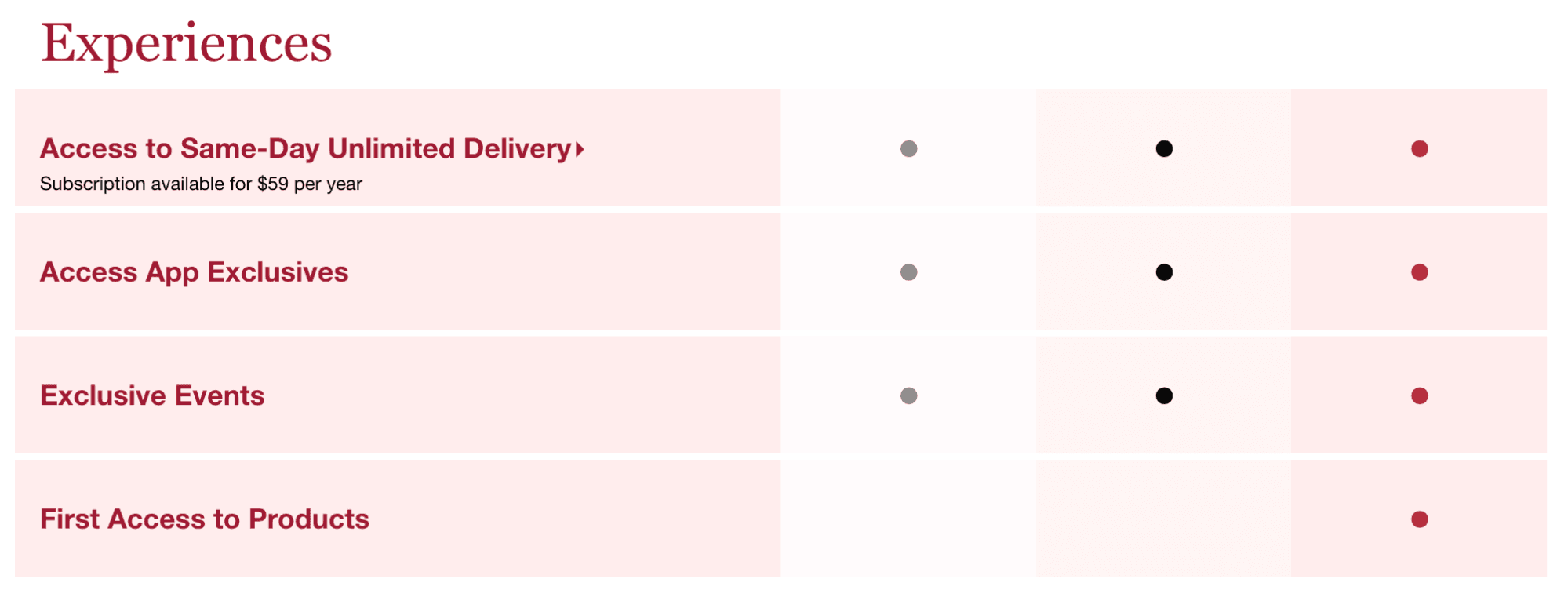
Closing Thoughts
Loyalty programs have consistently proven to be effective in driving customer engagement, retention, and revenue across various industries. They offer immense value by enabling the collection of rich first-party data critical for personalized marketing. Despite this potential, many programs falter because marketers lack the necessary data to build effective customer journeys and anticipate needs.
Leading brands are turning to Hightouch and a Composable CDP architecture to create a successful loyalty program like PetSmart’s Treat Rewards. This approach empowers marketing teams to take advantage of your existing data investments and self-serve the data they need to deliver hyper-personalized experiences, driving long-term customer loyalty and growth.
Interested in learning more about how leading brands are powering their loyalty programs? Book time with our solutions team today.




